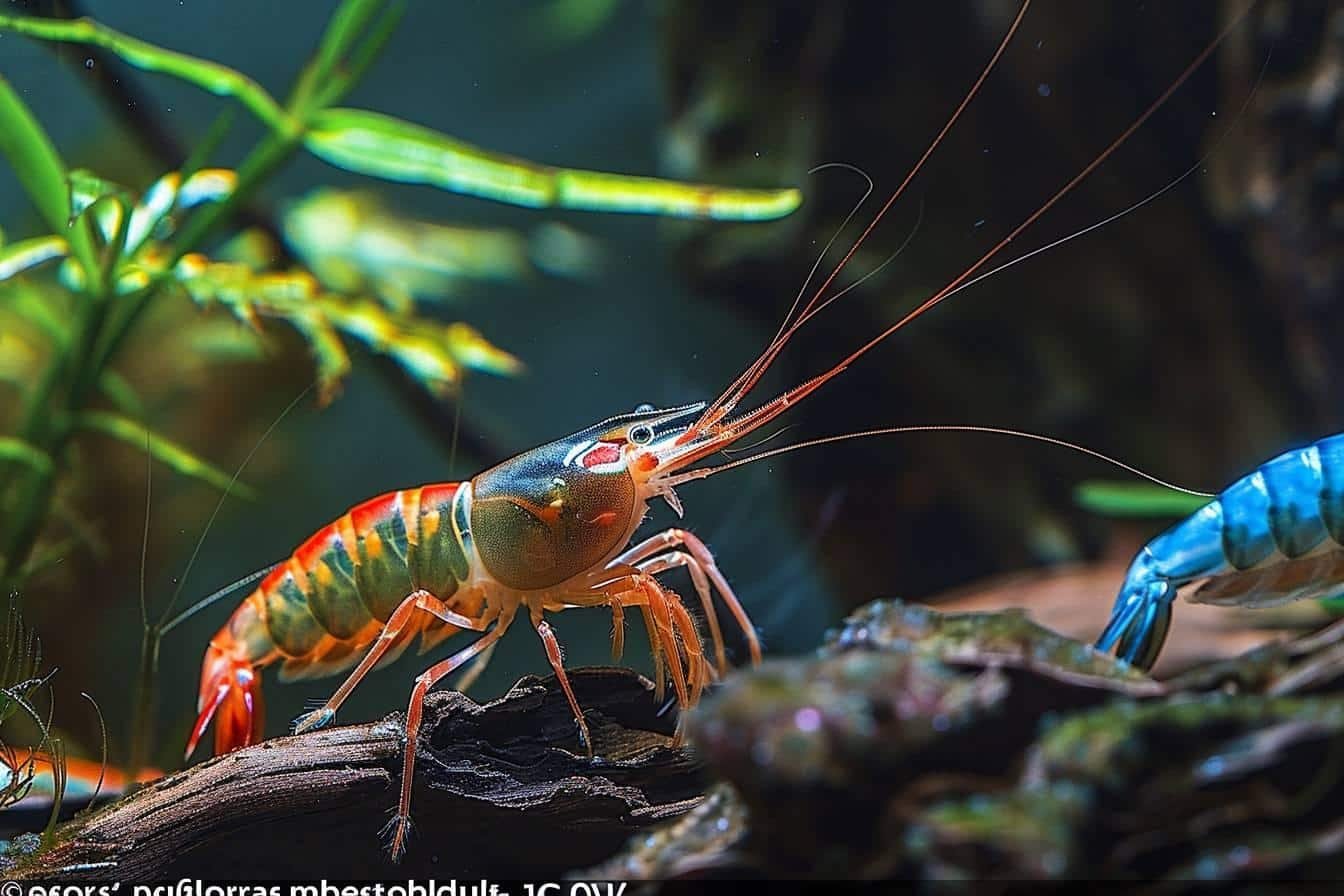Create a maintenance-free shrimp aquarium may seem a difficult task but, with the right advice, it's far from impossible. Freshwater shrimps offer a fascinating and often simpler alternative to traditional fish. I'll guide you through the best practices for choosing and maintaining such an aquarium.
Conditions for rearing freshwater shrimp in aquariums
To raise freshwater prawnsThere are a few basic conditions that need to be met. Shrimps can be reared in small aquariums, such as a 30-litre nano aquarium, as long as the right environment is maintained.
Water temperature and parameters
Shrimps can live in a range of temperatures from 18°C to 24°C, making them seasonally resistant creatures. However, water quality is crucial to their survival. Make sure that the water contains a minimum of limescale and is free from copper, a substance that is toxic to them.
Filtration and aquarium plants
A quality filtration is essential for keeping the water clean and the shrimp healthy. In addition, natural plants are essential as they provide hiding places for shrimps, which like to hide in order to feel safe.
Group life
Shrimps are sociable creatures. To avoid stress, they should live in groups of at least ten individuals. This way, they will feel safer and behave more naturally.
The different species of freshwater shrimp for farming
There are several species of shrimp suitable for freshwater aquariums, each with its own specific characteristics and needs.
Popular species
- Caridina marinae (tiger prawn): Adapted to neutral to slightly acidic waters.
- Neocaridina davidi (Red Cherry): Very prolific and easy to care for.
- Caridina cf. babaulti green (Indian shrimp): Discreet and rather fragile, likes slightly acidic environments.
- Caridina multidentata (Amano shrimp): Effective for cleaning up dead leaves and small objects. algae. It requires an aquarium of at least 60 litres.
- Caridina logemanni (Crystal Red) : Appreciated for its distinct red and white patterns.
- Neocaridina palmata (White Pearl): Easy to breed, but requires a minimum water volume of 60 litres.
- Neocaridina Blue Velvet Known for its intense blue colour and easy maintenance.
Specific characteristics of certain species
The Amano shrimp, for example, is not only robust but also excels at cleaning the aquarium by consuming algae and organic waste. Crystal Red, meanwhile, is often chosen for its attractive patterns.
Food and food supplements
Shrimps are detritivores; they feed mainly on plants, algae and other organic waste present in the aquarium. However, it may be necessary to provide them with food supplements such as spirulina or Catappa leaves to supplement their diet and keep them healthy. Be careful not to overfeed, as this will affect water quality.

Shrimp cohabiting with other species
The cohabitation of aquarium shrimps with other species of fish is possible, but particular attention must be paid to the choice of fish.
Compatible species
- Molly
- Platy
- Danio Perlé Celeste
- Ancistrus
- Otocinclus
Fish to avoid
Large or predatory fish, as well as live species, are not recommended. These types of fish can stress or even eat shrimps, especially young ones.
Shrimp behaviour
Shrimp spend most of their time foraging for food in the aquarium. They may also moult in order to grow, shedding their shell, which is often mistaken for a corpse by novices. So it's important to be aware of their behaviour to avoid misjudgements.
Why put shrimp in an aquarium?
Putting shrimps in an aquarium has many advantages.
Minimum maintenance
Prawns require much less maintenance than fish. This can make them an excellent choice for beginners or those with limited time. They also help to keep the aquarium clean by consuming algae and detritus.
Miniature ecosystems
Some aquariums, such as biospheres containing Hawaiian Opae'ula shrimps, can function as miniature ecosystems. These biospheres generally require no maintenance thanks to photosynthesis and a balanced life cycle.
Variety and diversity
Aquarium shrimps come in many varieties, in a variety of colours and patterns. They add a lively, aesthetic touch to your aquarium. Some species, such as the Amano shrimp, are even crossed to create new varieties of colour and pattern.
Awareness and well-being
For an animal lover concerned about their welfare like me, watching shrimps in their natural environment can be a source of daily relaxation and wonder. This aspect helps to make the aquarium more interactive and pleasant to look at.
| Species | Size | Features | Specific requirements |
|---|---|---|---|
| Caridina marinae | 2 to 3 cm | Suitable for neutral to slightly acidic waters | Slightly acidic water |
| Neocaridina davidi | 2.5 cm | Prolific, easy to maintain | Neutral water |
| Caridina cf. babaulti green | 2 cm | Discreet, fragile | Slightly acidic water |
| Caridina multidentata | 3 to 5 cm | Efficient algae cleaner | Aquarium 60 litres minimum |
| Caridina logemanni | 2.5 cm | Red and white patterns | Slightly acidic water |
| Neocaridina palmata | 2 cm | Easy to raise | Aquarium 60 litres minimum |
| Neocaridina Blue Velvet | 2 cm | Intense blue colour | Neutral water |
For those wishing to explore more about specific species, here is a guide to successful shrimp aquarium breeding to find out more.
